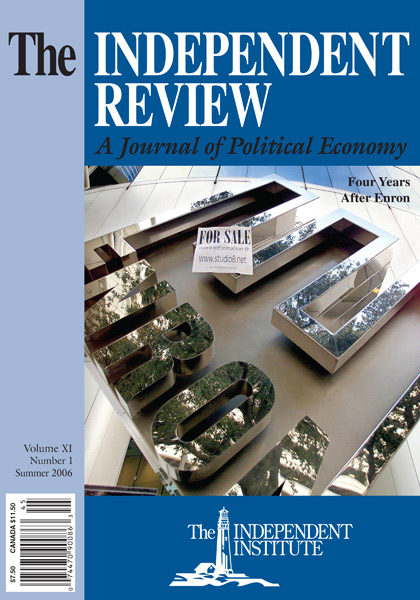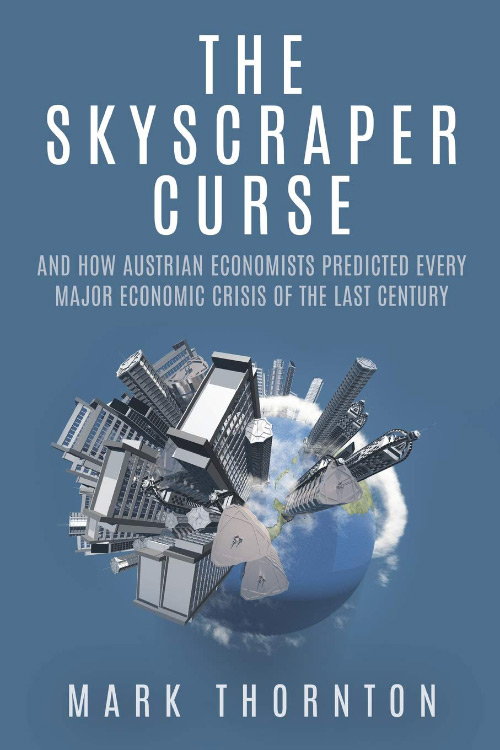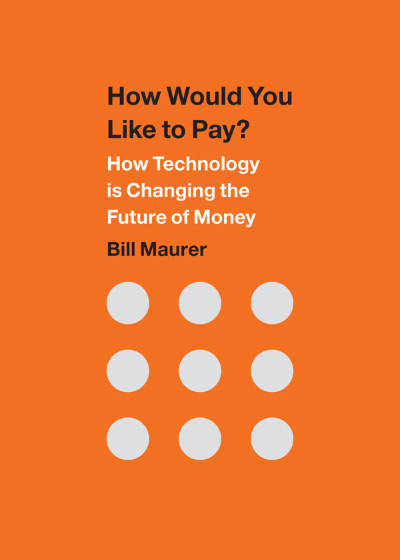Revolutionary improvements in computing and information technology, falling prices for equipment and services, and rapidly changing industry structures have turned telecommunications markets upside down.
Twenty years ago virtually all telephone service was provided over copper wires. Today, more than 160 million wireless telephones are in use, exceeding the number of traditional wireline subscriptions. Wireless and Voice-over Internet Protocol (VoIP) services are eroding wireline demand by 7 percent per year. More Internet subscribers now use broadband access than use dial-up connections.
A similar inversion has occurred in video-distribution markets. Television programs once were distributed as free over-the-air broadcasts. Today, 75 percent of households subscribe to cable TV, and another 10 percent receive direct satellite transmissions. Viewers can look forward to watching digital television on third-generation wireless telephone sets and to receiving streaming video over broadband power-line connections.
Behind these agreeable advances lies a world of regulatory uncertainty. The transition from de jure monopoly and oligopoly to de jure, if not yet de facto, competition, coupled with a technological “convergence” that treats all communications as indistinguishable streams of 1s and 0s, has led unexpectedly to increased federal regulation. Most of this increase occurred after the Telecommunications Act of 1996, which was heralded initially as the most comprehensive deregulatory and competition-enhancing legislation ever enacted. The act is seen today as having failed to accomplish these objectives. A deregulated and fully competitive telecommunications industry remains an abstract vision as pressure mounts for yet another legislative effort to get regulation right.
Digital Crossroads: American Telecommunications Policy in the Internet Age ably documents telecommunications’ struggling policy transition from pervasive industry regulation to regulated quasi-competition during a period of rapid technological change. The authors, Jonathan E. Nuechterlein and Philip J. Weiser, bring impressive credentials to this effort. Each is a lawyer and former Supreme Court clerk: Nuechterlein also served as deputy general counsel to the Federal Communications Commission (FCC) and presently practices telecommunications law in Washington; and Weiser was a principal telecommunications advisor to the Justice Department and now toils in academia. Their book is a readable, comprehensive, and thoroughly documented tutorial covering the policy aspects of voice, data, video, and Internet services, as well as the key aspects of such related issues as carrier-compensation conflicts, spectrum allocation, standards setting, and embedded “subsidies” for rural subscribers, hospitals, libraries, schools, and telecommunications research. It provides just enough technical detail and economic background to place the policy issues in perspective. The book is certain to become a primary reference for industry practitioners, regulators, attorneys, historians, and students.
The authors describe their effort as twofold: “First . . . to help non-specialists climb this fields’ formidable learning curve,” and “[s]econd . . . to make substantive contributions to the major policy debates within the field” (p. xv). They succeed admirably well on the first count, which in turn furthers the attainment of their second objective. The book takes a balanced approach to policy analysis, fully elaborating competing options and arguments across the full spectrum of pending issues. Its focus throughout is on competition policy, substitutability and conflicts among rival technologies and delivery platforms, and the dramatic transformations being wrought by the Internet. The book contrasts with the multitude of related works by academic economists, which implicitly advocate the efficiency consequences of static welfare analysis and scrutinize policy options through a public-choice lens. The authors’ “policy” approach fits comfortably with the reality of telecommunications’ having become “an exceptionally lawyer-driven” industry (p. 99). Attorneys and judges, to their credit, have absorbed the policy-relevant economics of scale, scope, and density; network effects; and monopoly leveraging. A federal court, for example, recently instructed an errant FCC on the irrelevance of fixed costs to competitive pricing decisions (see p. 250), delivering in the process a subtly humorous caricature of an industry turned upside down.
Besides elaborating policy options for preventing “market failure,” the book highlights in passing the process of political failure that has produced regulatory incoherence. Changing technical, economic, and regulatory circumstances across telecommunications markets, affecting an estimated 15 percent of the U.S. economy, “have triggered some of the fiercest public policy wars ever waged” (p. 2). The authors note that the Telecommunications Act of 1996 “was effectively written by warring interest groups that believed they were playing a zero-sum game” (p. 413), and they echo the Supreme Court by characterizing the resulting legislation as “a crazy-quilt of ambiguous provisions designed. . . to leave many of the important questions unanswered so as to offend no powerful interest groups” (p. 28). They cite instances of how “opposing political factions [have kept] the FCC in a state of near-paralysis for several years” (p. 164), and they find that the agency “often seems more adroit at jury-rigging intellectually sloppy deals to appease industry factions in the short term than at making the analytically sound but politically difficult policy choices needed to promote long-term economic efficiency” (p. 426). They quote approvingly the economist and regulatory authority Alfred Kahn, who condemned one recent FCC policy report as “an abomination, purely political in the worst sense of the term and grounded in neither good economics nor honorable regulatory practice” (p. 108).
The authors nevertheless conclude that “continued reliance on the FCC is . . . the worst way to superintend competition policy in the telecommunications industry—except for the alternatives” (p. 419). Overall, their “thesis is that facilities-based competition will warrant comprehensive deregulation of the telecommunications industry over time, but that deregulating it now, completely and instantaneously, would produce serious market failures and harm consumers” (pp. 3–4). Their view echoes the decades-old political commitment to deregulating telecommunications with “all deliberate speed.” It contrasts sharply, however, with the views of other policy scholars, “libertarians” in particular (pp. 415-16), who blame “market failure” in this industry on regulatory malfeasance and flawed spectrum-management policies, and who advocate the deregulation of telecommunications in one fell swoop and reliance on antitrust courts to safeguard the market process.
The authors stress throughout that “[l]ike services need to be regulated alike, except where there is some compelling economic reason for treating them differently” (p. 113, emphasis in original). Artificial distinctions, they note, distort markets and give rise to entrepreneurial firms whose principle business is arbitraging regulatory inconsistencies. Accordingly, they would disapprove of the Supreme Court’s recent decision affirming the FCC’s legal authority to prescribe discrepant regulatory treatment for two competing Internet access technologies, Digital Subscriber Line (DSL) and broadband cable (National Cable & Telecommunications Association v. Brand X Internet Services, slip op. 04–277, June 27, 2005).
The authors identify four dimensions in which telecommunications regulation can be improved through institutional reform (pp. 411–19): (1) determinacy—enhancing allocative efficiency by harmonizing legislative, regulatory, and judicial activities in ways that make regulatory policies consistent and predictable; (2) expertise—deferring all complex issues to the most qualified superintending authority; (3) neutrality—pursuing wealth-maximizing policies that are consistent with the economic goals of antitrust law; and (4) humility—showing more faith in the market’s spontaneous capacity to produce economically optimal outcomes and eschewing reflexive command-and-control regulation. Other commentators have floated similar recommendations over the years, always to no effect. The authors offer no new theory or approach for dealing with the political forces that make regulation what it is and that thwart efforts toward reform.
The authors’ faith (and that of some “libertarians”) in the capacity of antitrust principles to produce efficient, wealth-maximizing market outcomes—goals unknown to the framers of the Sherman Act—may be unduly optimistic. Antitrust theory has lost its “intellectual respectability” (see Robert Bork, The Antitrust Paradox: A Policy at War with Itself [New York: Basic Books, 1978], p. 418), and enforcement has become a rent-seeking game wrapped in the jargon of law and economics and driven by arbitrary and ad hoc notions of market fairness (see, for example, Fred McChesney and William Shugart, eds., The Causes and Consequences of Antitrust: The Public-Choice Perspective [Chicago: University of Chicago Press, 1995]). Antitrust practice has embraced many noneconomic goals over the years, such as the preservation, “for its own sake and in spite of possible cost, [of] an organization of industry in small units which can effectively compete with each other” (United States v. Aluminum Corporation of America, 148 F.2d 416, 428–429 [2d Cir. 1945], emphasis added). Whether specialized antitrust courts can outperform regulation in promoting narrow economic goals is a proposition waiting to be tested.
Two general criticisms of this book warrant brief mention. First, the authors introduce notions of “path dependence” and “tipping” to illustrate the potential for “network effects” to cause market failure. These rhetorically seductive concepts are unsupported by empirical evidence drawn from unregulated industries (see, for example, Stan Liebowitz and Steven Margolis, Winners, Losers, and Microsoft [Oakland, Calif.: The Independent Institute, 1999]). Their best use in this context is for describing the ratcheting effects of incremental regulation.
Second, the authors follow the undesirable practice of discussing “subsidy” without distinguishing clearly between the economic principle of pricing below marginal cost and the egalitarian condemnation of discriminatory markups above marginal cost. The loose use of economic terminology has confused policy debates for decades and undoubtedly will continue to do so.
These quibbles aside, Digital Crossroads is a welcome contribution to the telecommunications policy literature.
| Other Independent Review articles by James A. Montanye | ||
| Summer 2018 | Digital Revolutions in Public Finance | |
| Winter 2015/16 | Does Altruism Exist?: Culture, Genes, and the Welfare of Others | |
| Fall 2014 | The Great Debate: Edmund Burke, Thomas Paine, and the Birth of Right and Left | |
| [View All (24)] | ||


















